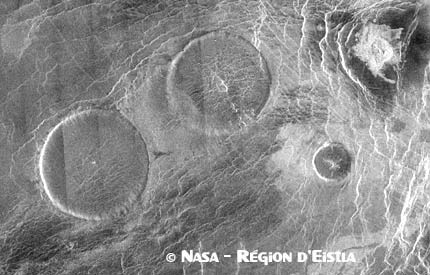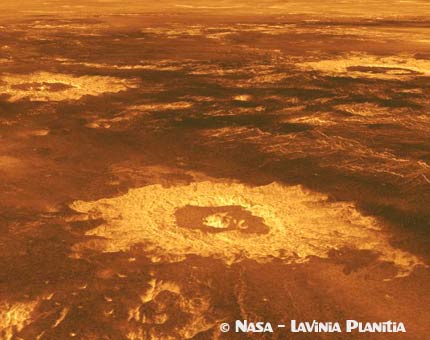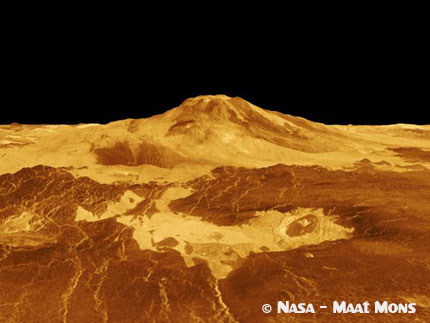|
|
Venus2004.org
> Files
2°) Dormant volcanoes
 The dense atmosphere of Venus consumes most of the small asteroids and comets that cross its way, and only large objects make it through to strike the ground: there are less than a 1000 impact craters on Venus. The number is too small to derive relative ages of the various terrains of Venus, by the traditional method of crater-counting. Over is three-year mission (1990 to 1993), Magellan did not detect any new-looking lava flow from one pass to the next, which suggests that volcanism is in low gear on Venus. Moreover, Venus volcanoes might be older than they look, because erosion rates are low and they are well preserved. There is no rainfall on Venus and the dense atmosphere of carbon dioxide works more like a protective lid than as an agent of erosion. Some contemporary-looking volcanoes might be aged tens to hundreds of millions of years.  How does Venus function? Without plate tectonics, the planet’s heat exhaust seems to rely mostly on hot spot volcanism, by which hot plumes of mantle rock rise towards the crust and arch it upward to crack it and build giant volcanoes, or circular coronae. The latter are interpreted to be plumes that are unable to break through to the surface and spread radially outwards within the crust. Today, Venus’ output of heat relies principally on hot spots. These might turn out to be insufficient to evacuate all the heat, so that the planet might occasionally experience temperature surges, and an outbreak of enhanced volcanism with a global turnover and renewal of the crust. The last crisis apparently dates back to about 500 million years.  |
|
© 2003-2006 Futura-Sciences.com. All rights reserved.
Indexator - Comparateur de prix - Revue de Presse
